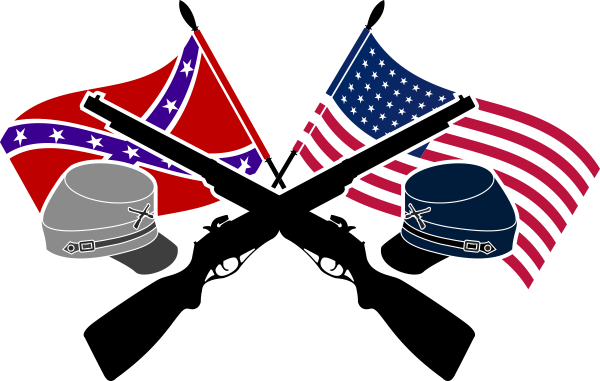Video: The Road to War
The Civil War is one of the most life-changing wars that took place in our country. Why did it happen and what two sides fought in it?
Goal:
Goal:

The video below will explain the events that led to the Civil War.
The Road to Civil War
Meet the History Kids! They love history and teaching history to other kids.
Today, they want to take you on a road trip. Where is the destination?
This road trip will lead to the Civil War that happened here in America. Why did our country go to war with itself? The History Kids’ road trip will answer this question for you today.
The first stop on our road trip is to Uncle Tom’s Cabin.
Were you expecting an actual cabin? No, Uncle Tom’s Cabin was a novel written in 1852 by Harriet Beecher Stowe.
Why would a book be on this road trip? The author was an abolitionist, which means she wanted slavery abolished or ended. Her book showed the terrible realities of the lives of slaves. It opened the eyes of Americans who lived in free states to the evils of slavery.
Take out your activity page and complete the section on Uncle Tom’s Cabin.
The second stop on our road trip is the Compromise of 1850.
This compromise had five aspects, and it was meant to help keep peace between slave states and free states. Let’s look at the four parts of the compromise that are important to this road trip.
First, California was admitted as a free state
Second, New Mexico and Utah were allowed to have their residents decide the issue of slavery for their state.
Third, a stronger fugitive slave law was passed so slaves who escaped from a slave state to a free state had to be returned.
Fourth, Washington D.C. could not trade slaves.
Why is the Compromise of 1850 on our road trip to the Civil War?
Number one, the compromise was believed to favor the South.
Number two, it was only temporary and did not give a permanent solution to the issue of slavery.
Number three, the stricter fugitive slave law encouraged more people in the North to oppose slavery.
On your activity page, complete the section on the Compromise of 1850.
Our third stop is the Kansas-Nebraska Act.
This act created the territories of Kansas and Nebraska so there could be thousands of new farms and make a Midwestern Transcontinental Railroad possible.
But these new lands also brought people from both sides--pro and anti-slavery--who had violent confrontations when fighting over whehter the lands would allow or not allow slavery. This fighting is known as Bleeding Kansas.
Complete the section on the Kansas-Nebraska Act on your activity page.
Our fourth stop will be John Brown’s raid.
John Brown was an abolitionist and wanted to end slavery. His plan was to give weapons to the slaves in the South. He got a small group of 21 men together and captured an arsenal full of weapons in Harpers Ferry.
John hoped that hundreds of slaves would come and take weapons once they had secured them, but this did not happen. Instead, John Brown and his men surrounded them and some were killed.
John Brown and four of his men were tried for treason and hanged.
Although John Brown’s plan failed, his story became famous all over the United States. Abolitionists grew stronger after learning of John Brown dying while trying to end slavery.
Complete the section on the John Brown raid.
The Dred Scott case is the fifth stop on our road trip.
Dred Scott sued for his freedom because he lived in a free territory. His case went all the way to the Supreme Court.
The Supreme Court ruled that African Americans, free or slaves, were not American citizens, so they could not sue in federal court.
This decision fueled the abolitionists and helped the popularity of the antislavery Republican party grow.
It is time to fill in the section on the Dred Scott case.
We have two stops left. This stop is Abraham Lincoln winning the election to become the 16th president.
Abraham Lincoln was a member of the new Republican party, which was anti-slavery. Lincoln said he would not interfere with slavery where it was legal, but he would not allow slavery to expand.
The South did not want a president that did not believe in slavery. South Carolina led the southern states in seceding from the Union. The southern states wanted to be their own country and no longer a part of the United States.
Write the information in the election of Lincoln section.
It’s our last stop before the country breaks into Civil War.
Fort Sumter is in South Carolina on its own island. The Union Army was at the fort and the southern states just formed their own Confederate Army.
The Confederate general told the Union general at Fort Sumter that he had one hour to leave the fort or the new Confederate Army would start to fire. An hour later, the Battle of Fort Sumter began. The South surrounded the fort and eventually the Union Army surrendered. Since shots were fired from both sides, this officially began the Civil War.
This ends the road trip as the Civil War started in 1861 with the Battle of Sumter.
Complete the last section about Fort Sumter.
Thanks for going on the Road Trip to the Civil War with the History Kids!
How did you do on your pretest? After watching the video, you know all of the statements are true. Now that you've learned more about the Civil War, color a U.S. map to identify which states were on which side.
Question
When did the Civil War begin?
1861